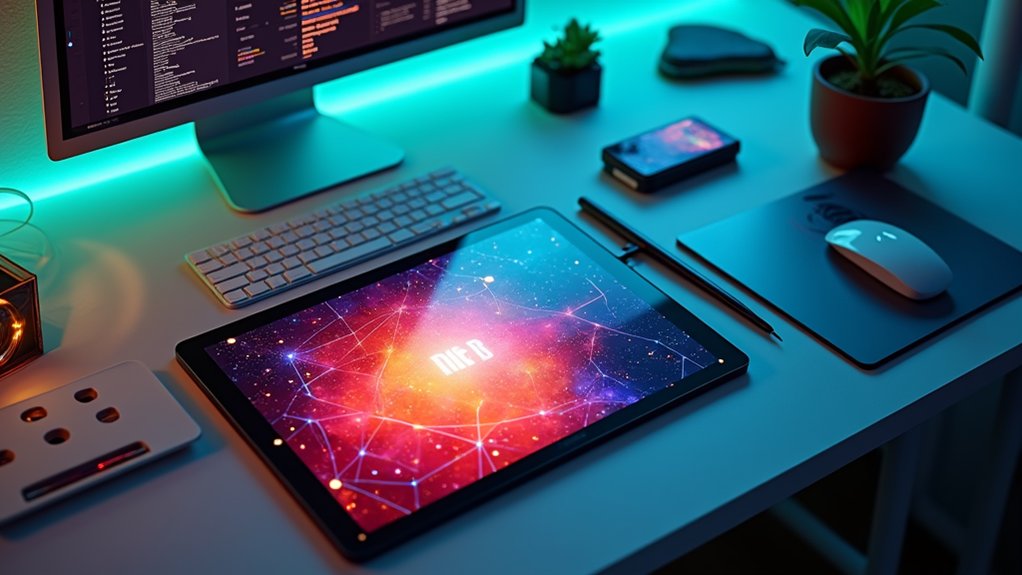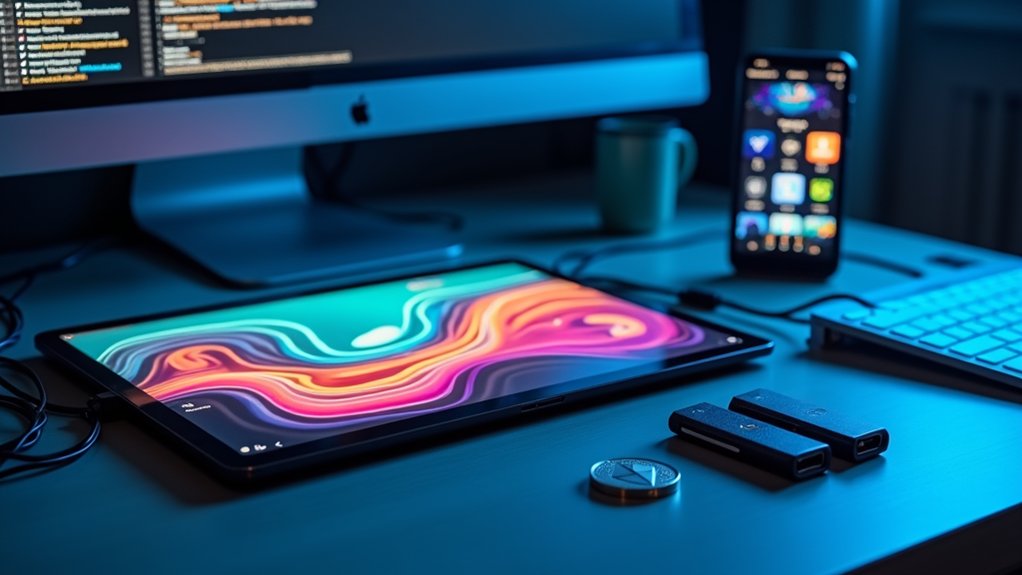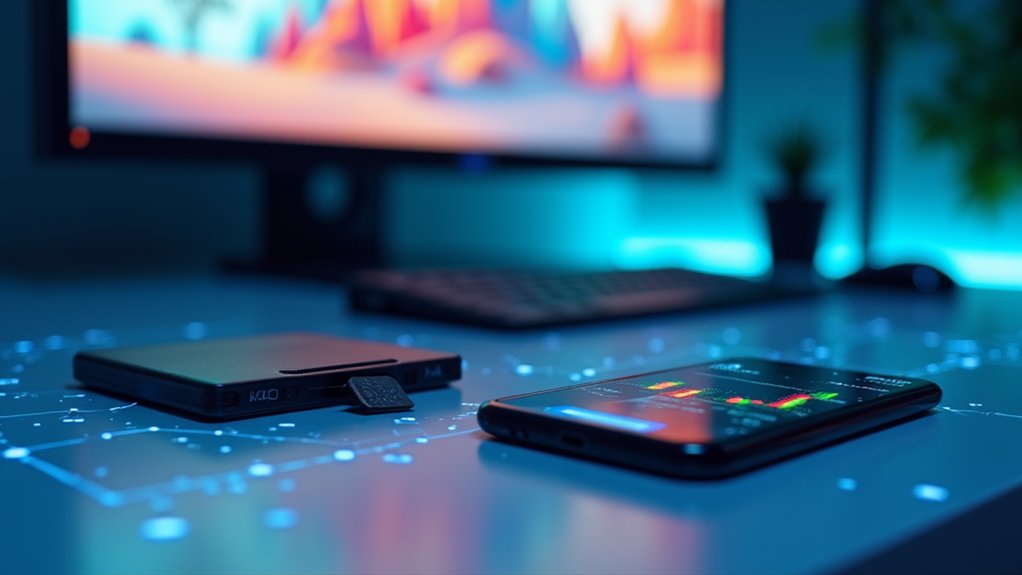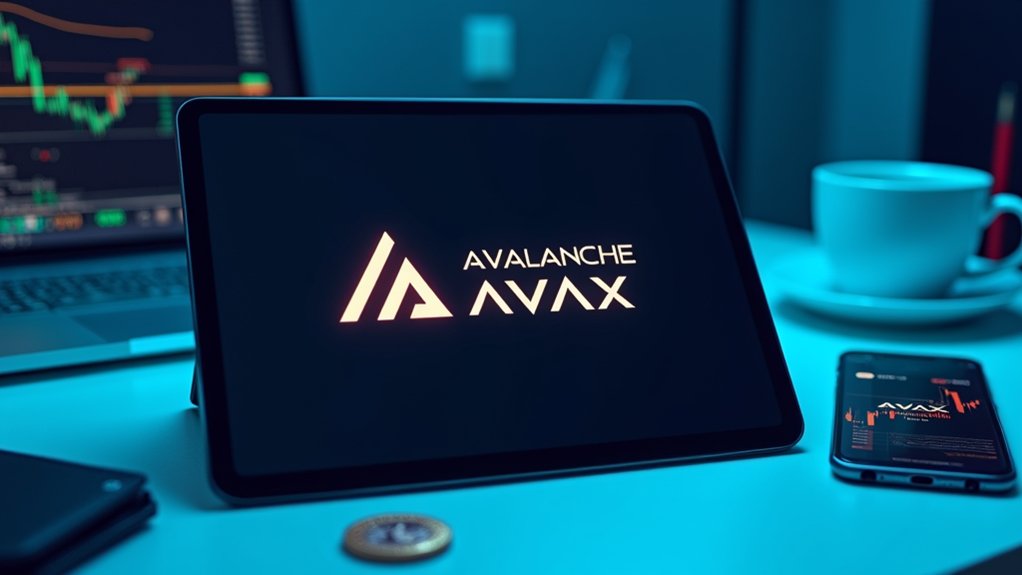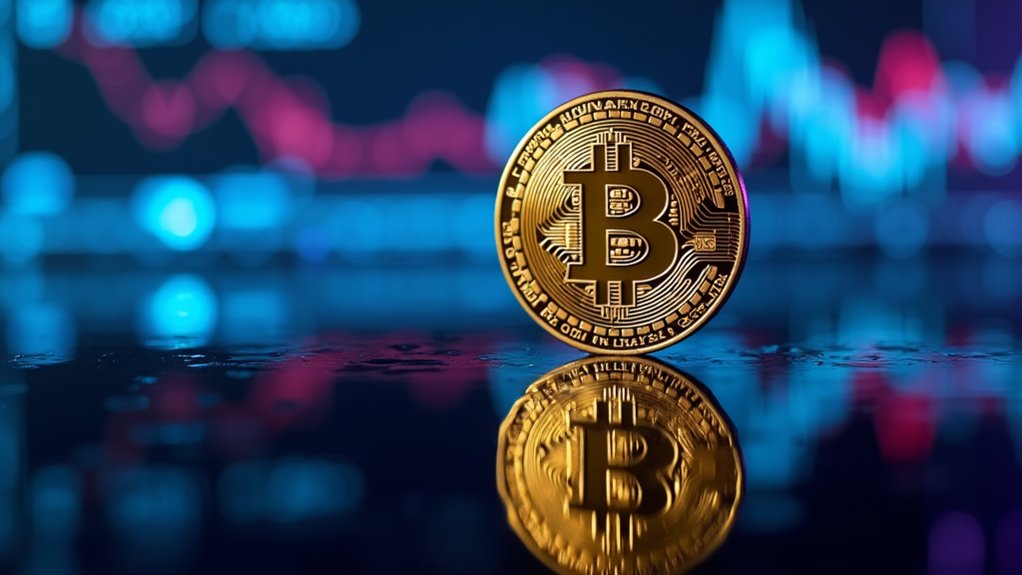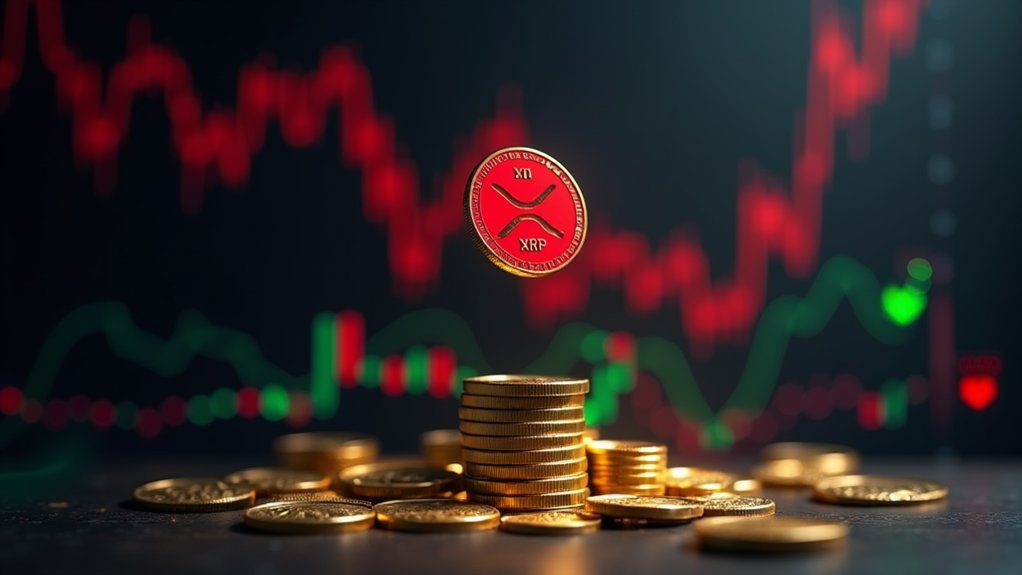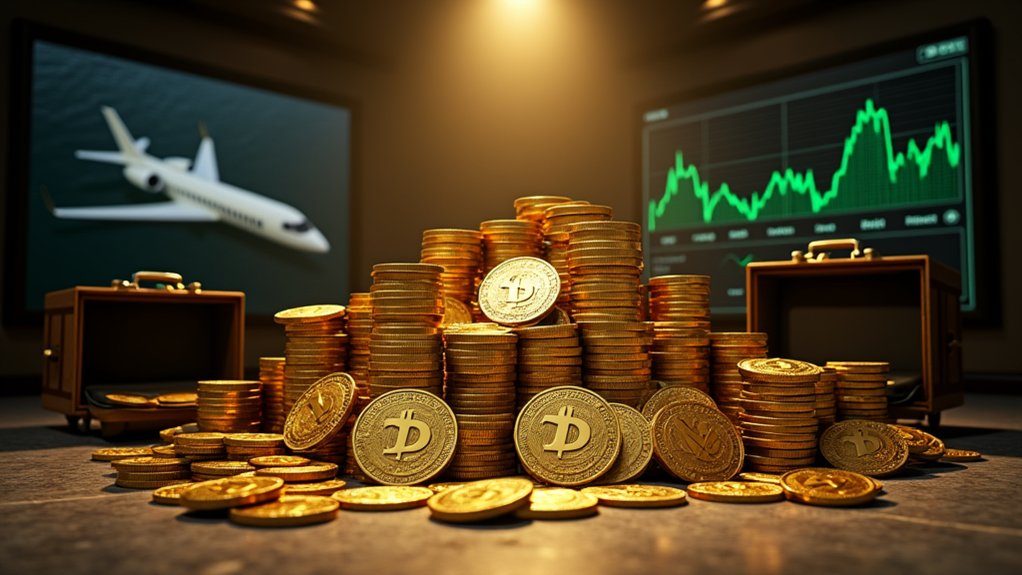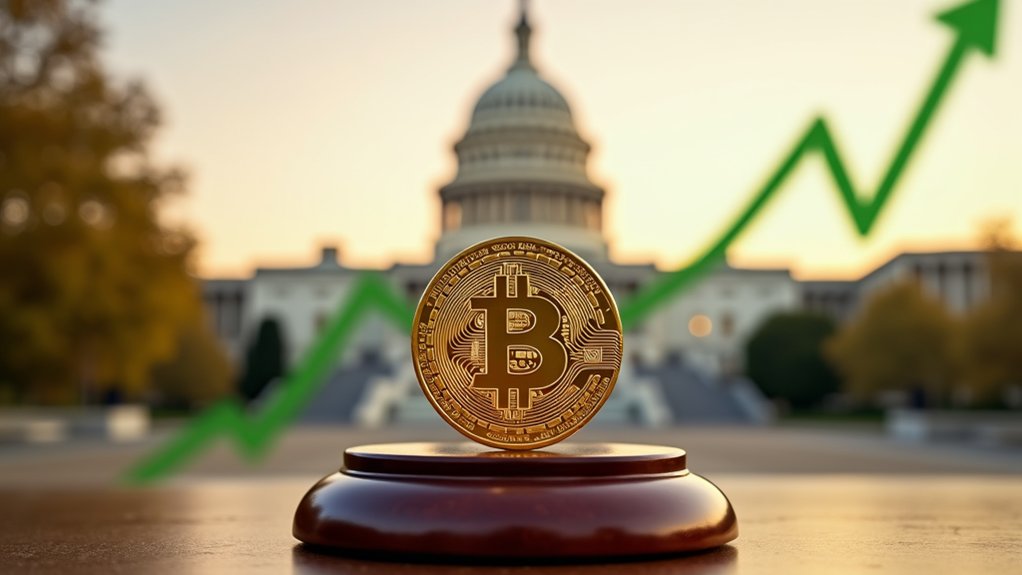Creating crypto art involves merging artistic innovation with blockchain technology through a five-stage process. Artists first develop unique digital concepts using tools like Photoshop or AI generators, then prepare appropriate file formats and establish cryptocurrency wallets. The minting process occurs on platforms like OpenSea or Foundation, requiring gas fees and metadata configuration. Strategic listing and community engagement through social media enhance visibility and sales potential. The complete journey from concept to marketplace reveals numerous technical subtleties and monetization strategies.
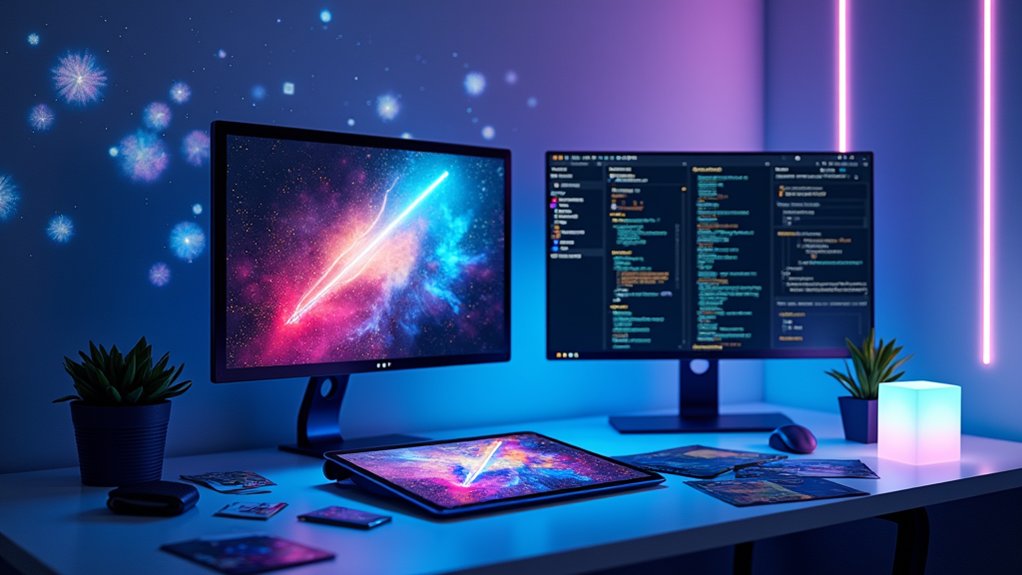
Creating crypto art represents a merging of artistic innovation and blockchain technology, requiring both creative vision and technical understanding to navigate successfully. Artists entering this space must begin by developing a distinct concept or theme for their work, utilizing digital tools like Photoshop, Blender, or AI generators such as DALL-E and Midjourney, or alternatively, digitizing traditional artwork through high-resolution scanning processes.
The selection of appropriate file formats, including JPEG, PNG, MP4, or GLB for three-dimensional models, constitutes an essential consideration, alongside thorough research into current market trends to maximize appeal and commercial viability. Many successful crypto art projects embrace memetic qualities that resonate within the online community, similar to the widespread appeal of Rare Pepes.
Technical preparation demands careful blockchain selection, with Ethereum and Solana representing primary options distinguished by their respective fee structures, flexibility parameters, and ecosystem advantages. Artists must establish cryptocurrency wallets through providers such as MetaMask or Coinbase, enabling NFT storage and transaction fee payment, while developing an informed understanding of gas fees, which represent blockchain validation costs that can fluctuate substantially based on network congestion. The current NFT marketplace offers continuous royalties from secondary sales, providing artists with ongoing revenue streams beyond initial transactions. Popular platforms like OpenSea and Rarible allow artists to monetize their work through fixed-price listings or competitive auctions.
Selecting the right blockchain ecosystem forms the foundation of your crypto art journey, dictating both costs and opportunities.
Platform verification requirements, including file size limitations and metadata standards, warrant thorough investigation prior to project commencement.
The minting process typically occurs through established platforms, including OpenSea, SuperRare, or Foundation, requiring extensive metadata configuration that includes artist information, provenance documentation, and smart contract specifications. Gas fees, ranging from $1 to upwards of $900 depending on blockchain congestion levels, must be paid to validate transactions, with artists advised to utilize low-cost testnets for process verification before mainnet deployment.
Platform selection considerations include choosing between curated marketplaces and open platforms, optimizing listings through descriptive text and search-friendly nomenclature, and timing launches strategically to coincide with favorable market conditions.
Successful crypto artists actively foster community engagement through social media platforms, Discord channels, and Telegram groups, while employing rarity tactics and collaboration strategies to enhance visibility.
The evolutionary nature of blockchain technology necessitates ongoing adaptation, with artists increasingly exploring emerging formats such as VR incorporation, metaverse applications, and dynamic NFTs to maintain relevance in this rapidly developing sector.
Frequently Asked Questions
How Much Does It Cost to Mint an NFT?
The cost of minting an NFT varies considerably across blockchain networks, ranging from $50-$1000+ on Ethereum during peak congestion periods to as little as $0.0081 on Solana.
Factors influencing these fees include network traffic, smart contract complexity, token standards, and timing of transactions.
Cost-conscious creators often utilize alternative networks like Polygon or Flow, which offer significantly lower fees, or employ strategies like lazy minting, bulk minting, and off-peak timing to minimize expenses.
Can I Sell My Crypto Art Without a Crypto Wallet?
Selling crypto art without a crypto wallet is fundamentally impossible in the current NFT ecosystem, since blockchain-based marketplaces require wallet unification for transaction verification, royalty distribution, and ownership authentication.
While theoretical intermediaries could facilitate sales, no mainstream platforms support these arrangements, leaving artists without wallets unable to mint, list, or receive proceeds from their work through established channels within the decentralized art marketplace.
Are Certain File Formats Better for Crypto Art?
Ideal file formats for crypto art vary by intended purpose, with PNG files offering superior quality for digital artwork due to lossless compression and transparency support.
For animations, GIFs serve simple motion while MP4 provides extensive video capability with wider compatibility.
3D NFTs benefit from GLB format, which efficiently packages textures and animations in a single file.
Most marketplaces support standard formats (PNG, JPG, GIF, MP4), while maintaining square dimensions and file sizes under 100MB guarantees ideal display across platforms.
Do I Need Coding Skills to Create Crypto Art?
Creating crypto art does not require coding skills, since numerous no-code platforms like OpenSea, Foundation, and SuperRare handle technical aspects through pre-programmed smart contracts and automated minting processes.
Artists can utilize user-friendly interfaces, drag-and-drop tools, and marketplace-provided templates to upload artwork and metadata directly to blockchains.
While technical knowledge may enhance customization options, the fundamental blockchain incorporation, royalty management, and marketplace connectivity are abstracted by these platforms, requiring only wallet connection and basic digital file preparation.
How Do I Protect My Crypto Art From Being Copied?
Protecting crypto art from unauthorized copying requires implementing a multi-layered security approach, including hardware wallets for offline storage, visible and invisible watermarking techniques, formal copyright registration, and vigilant monitoring through specialized tools.
Artists should utilize trusted NFT marketplaces with verification processes, maintain control over high-resolution files until transactions complete, and consider embedding digital signatures to establish authenticity.
Regular blockchain activity tracking, combined with low-resolution previews for online sharing, greatly reduces theft opportunities.
